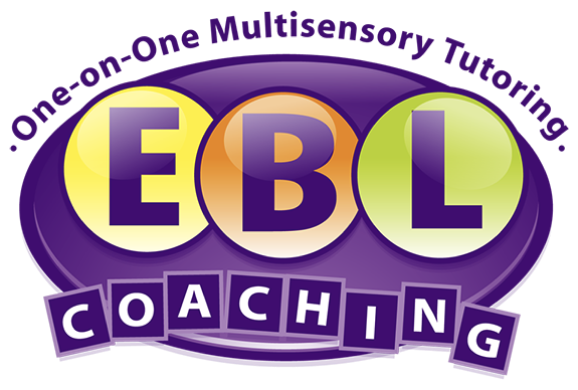
Tips for Educational Success at Any Age

In this day and age of preschools requiring interviews and extensive admissions testing, it feels like the pressure is on parents ridiculously early to give their children a jump start in their education. From getting into the right school to placing into a Gifted and Talented program, it can feel like you’re dooming your own child if you’re not helping them stay a step ahead of their peers. And then, of course, there are the plethora of learning or developmental disabilities we have to be on the look out for because we know that early intervention is key. It’s no wonder parents and children alike are completely stressed out over the whole ordeal!
To calm our nerves and get some professional insight, we consulted with Dr. Emily Levy, author of Study Success and the Flags and Stars five-part Orton Gillingham student workbook series, and Founder & Director of EBL Coaching, a specialized tutoring program offering individualized home and on-site one-on-one instruction in New York City, New Jersey and Westchester.
MN: How and when can we begin to introduce the idea of basic learning skills at home?
EL: Starting from as young as age two, parents can develop basic skills with their children in “fun” and engaging ways. For example, drawing letters with your fingers together in sugar or colored sand, or writing letters on the bottoms of rubber duckies and having your child flip them over in the bath and indicate the name or phonetic sound of the letter they found. You can also teach basic math skills through play. For example, have the child build two block towers and talk about which tower is taller or shorter and which has more or less blocks. The “Let’s Take a Trip” game is also great. The parent starts out with something like, “I took a trip to the store and bought two pieces of fruit. Show me what I bought.” The child pulls out two pieces of fruit from the fridge. Next, the parent says, for example, “I was still hungry so I went back to the store and bought three more pieces of fruit.” The child pulls out three more pieces of fruit. The parent then says, “How many pieces of fruit did I buy altogether?” The child counts the pieces of fruit and says five. The key is to keep the exercises playful, fun, and engaging.
MN: What are the most common learning disabilities and what signs should we be on the lookout for?
EL: Signs of learning disabilities can become evident at a very young age. If a child struggles with basic phonemic awareness skills such as rhyming or identifying sounds within words, or has trouble grasping sound/letter relationships or basic writing, he may be at risk for a learning disability. However, a full evaluation is needed to determine if in fact a learning disability is present. If a child does have a learning disability, using research-based, multi-sensory instruction often helps remediate any weaknesses.
MN: What are the biggest learning challenges you see in the various age groups?
EL: Preschool: Many toddlers have trouble grasping the names of letters and their corresponding sounds. They also may have trouble with rhyming, recognizing sounds in words, and identifying syllables.
Kindergarten/1st Grade: Many children have trouble decoding, or blending sounds together to form words when reading and spelling. They also may have trouble comprehending what they read, especially if reading is a slow, laborious process for them.
2nd/3rd Grade: Students often have trouble with reading fluency and understanding how to break down math word problems. They might have nice ideas but struggle to express them on paper when writing.
Upper Elementary: As students move from learning to read to reading to learn, the emphasis on reading for understanding becomes greater. Thus, many children struggle to identify salient information when reading and grasp the main idea. They also may struggle to express their ideas on paper in the form of well-written paragraphs and have trouble solving multi-step problems.
Middle/High School: At this age students often struggle with study and organizational skills. They may have trouble taking notes, managing their time, organizing their belongings, and studying for tests – along with core academic challenges, such as writing, reading comprehension, and math.
MN: We see you use the Orton Gillingham approach in the workbooks you’ve written and utilize in your tutoring program. Could you explain what this is?
EL: The Orton Gillingham approach is a research-based, multi-sensory technique for building reading and spelling skills. The approach begins with sound/letter relationships and later moves into blending simple and complex sounds to form words. It integrates the visual, auditory, and tactile/kinesthetic modalities simultaneously. I strongly believe that this is the most effective method for teaching children. In my Flags and Stars multi-sensory phonics program, students learn to understand how individual sounds blend together to form words, starting with simple two and three letter words and moving into words with blends, consonant and vowel digraphs, silent e patters, and multi-syllabic words. My Strategies for Study Success student workbook series teaches students in elementary through middle school research-based strategies for test taking, note taking, summarizing, highlighting, and writing.
MN: If you could pass along one piece of advice for parents regarding the education of their children, what would it be?
EL: It’s so important for students to build a real zest for reading and learning. They should enjoy the process of learning, rather than perceiving it as series of workbooks to complete or tests to take. When possible, parents should try to make learning fun, exciting, interesting, and playful, so that that the child ultimately develops a true love of learning.
